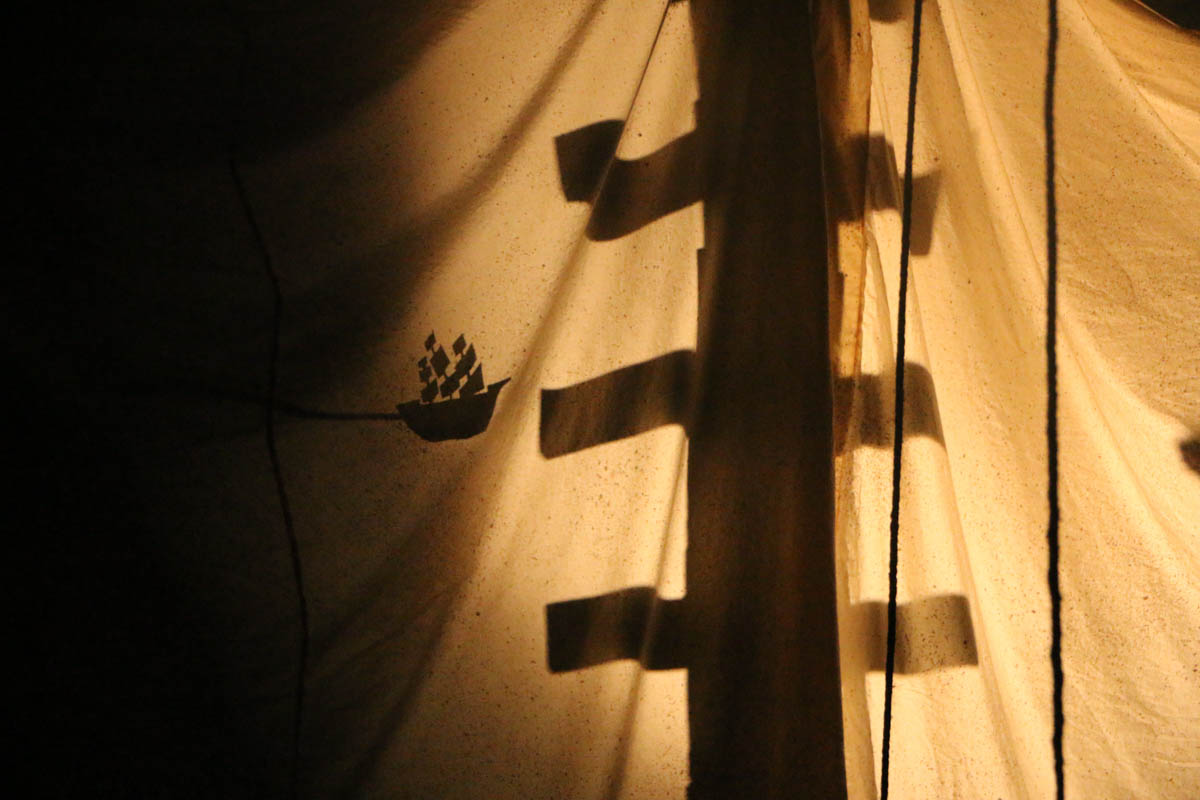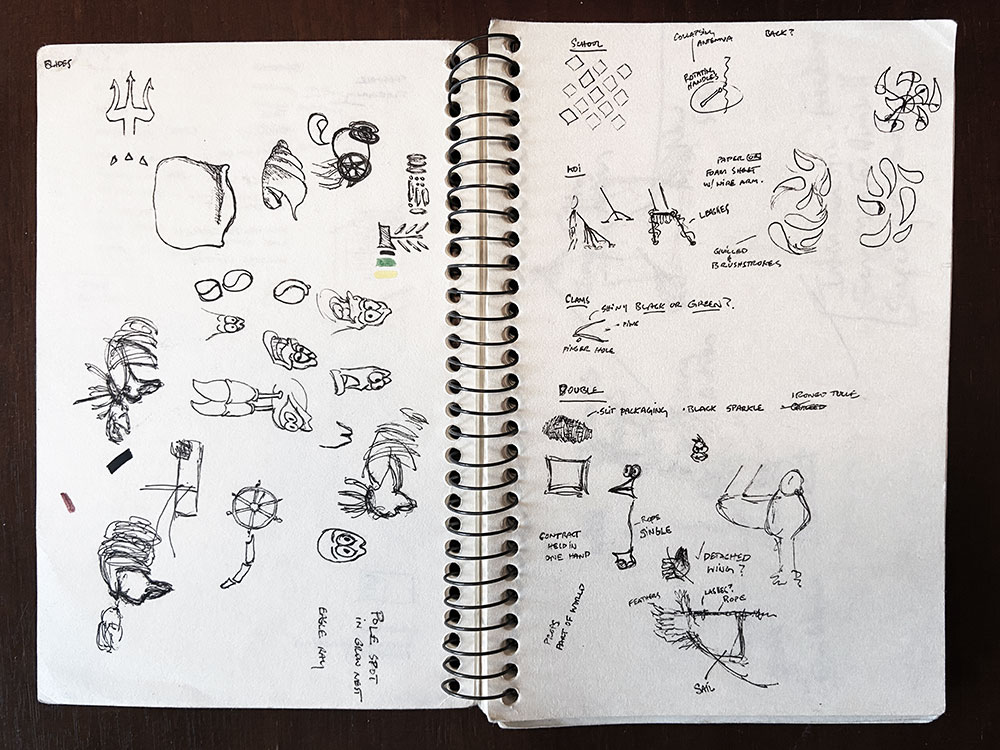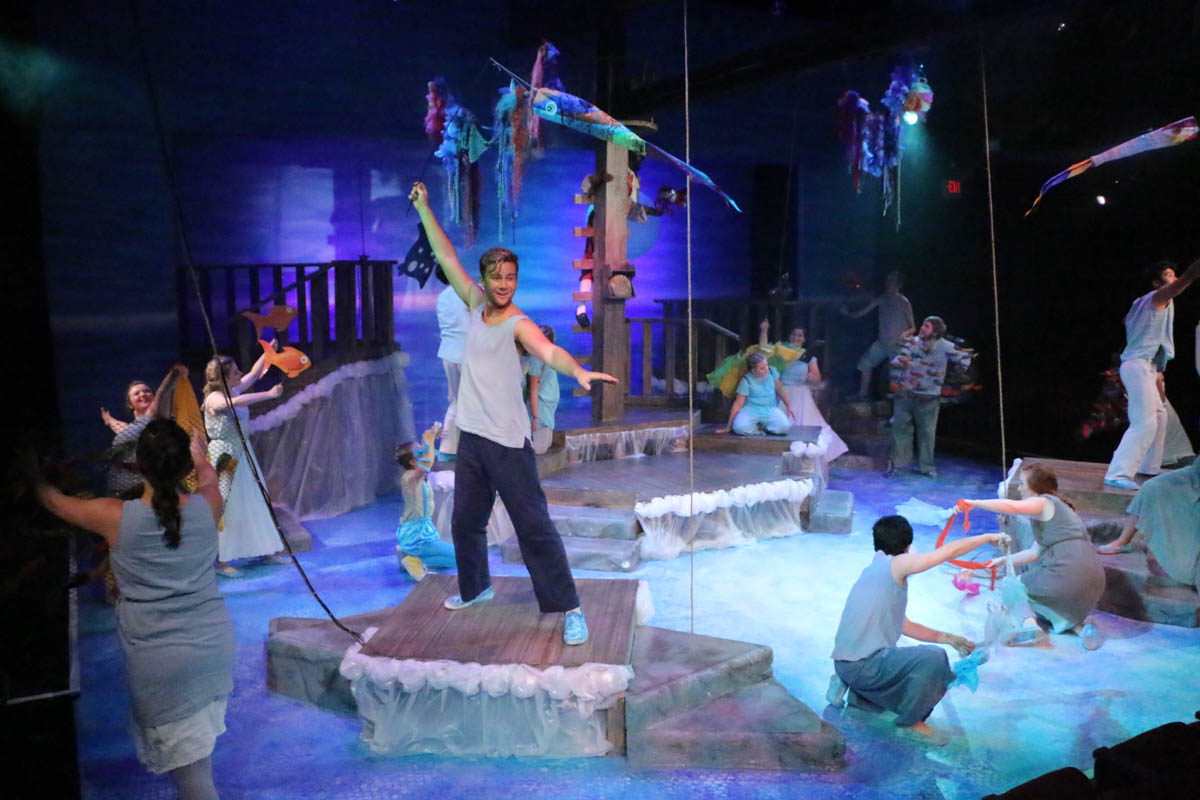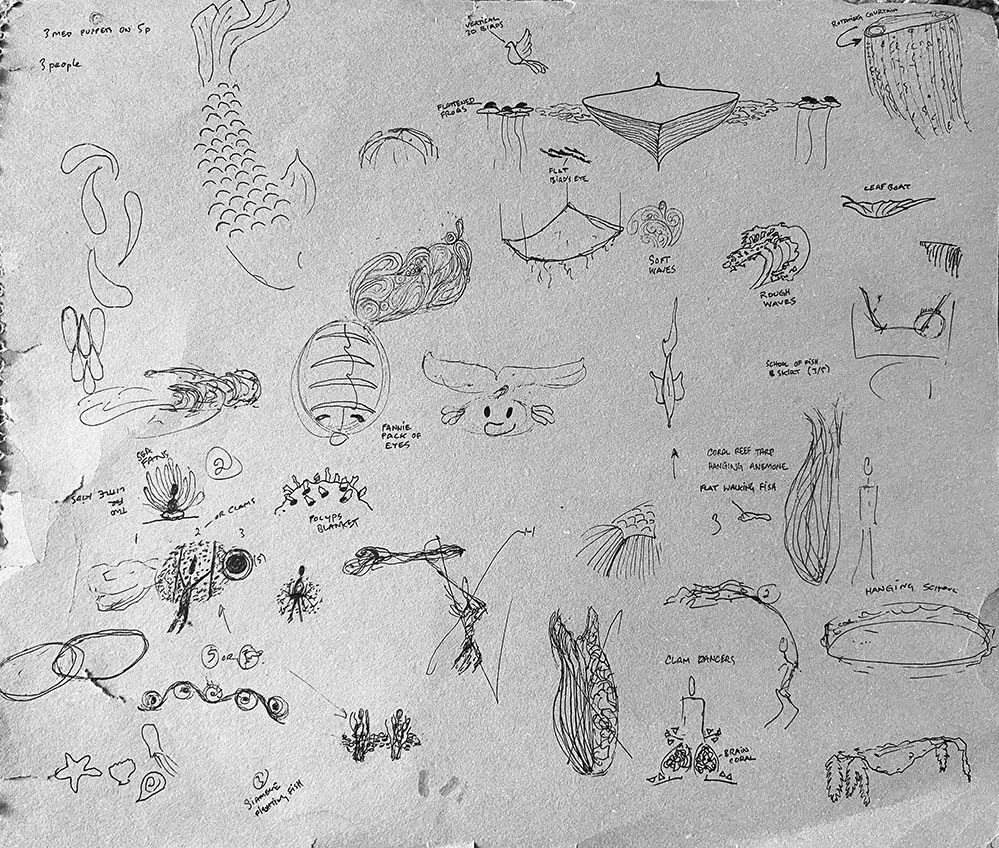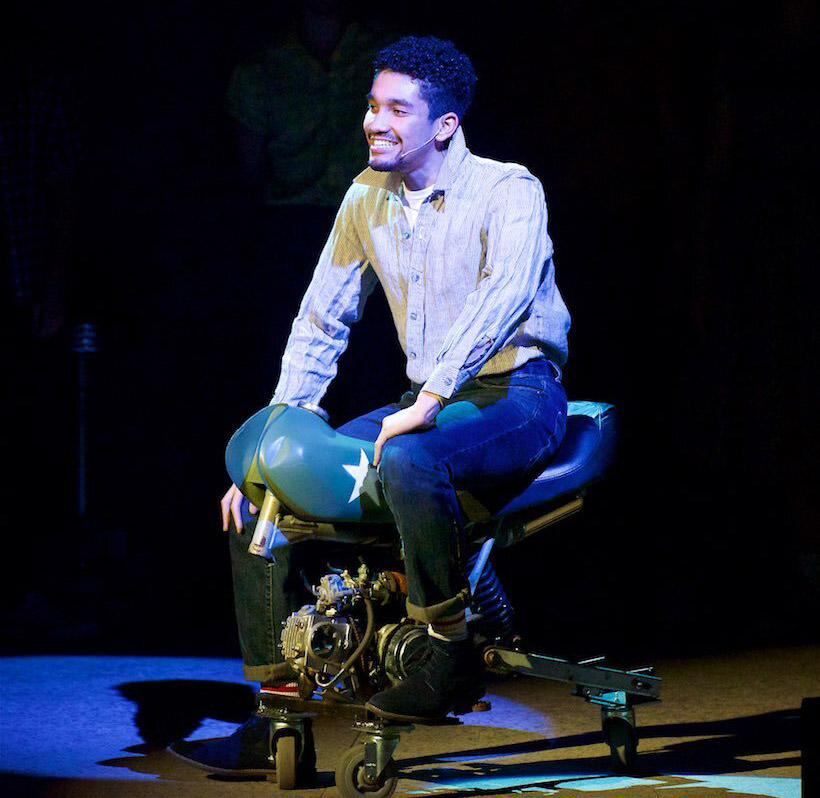Previous productions of The Little Mermaid have all grappled with successfully realizing the needs of the script. There are of course several fantastical needs, talking sea creatures as primary characters, mermaids that swim for a sizable portion of Act I, physical transformations, supernatural and natural phenomena, that in all reality could disconnect the audience from the story and our protagonist if focused on too heavily. A balance needs to be struck. Given the small budget and aesthetic expectations of the theater, leaning too hard into the conceptual was not an option, but with limitations come opportunities to do what was needed while making sure the fairytale was what shined through.
Looking through the eyes of our protagonist, Ariel, and her loving, mixed up, crafted fantasy of the human world with dinglehoppers and the like, I implemented a “loving craftiness” for the world under the sea. Puppetry is often used to solve animal characters on stage, but the type of puppetry is important. In our situation, our greatest strength were the actors interacting with each other as their characters, and their puppets were designed as extensions of themselves—personality and style. The puppets gave a sense of scale when interacting with more humanoid characters, but the actors could choose when they wanted to draw attention to their puppet or to themselves. I worked individually with the actors to help craft these techniques.
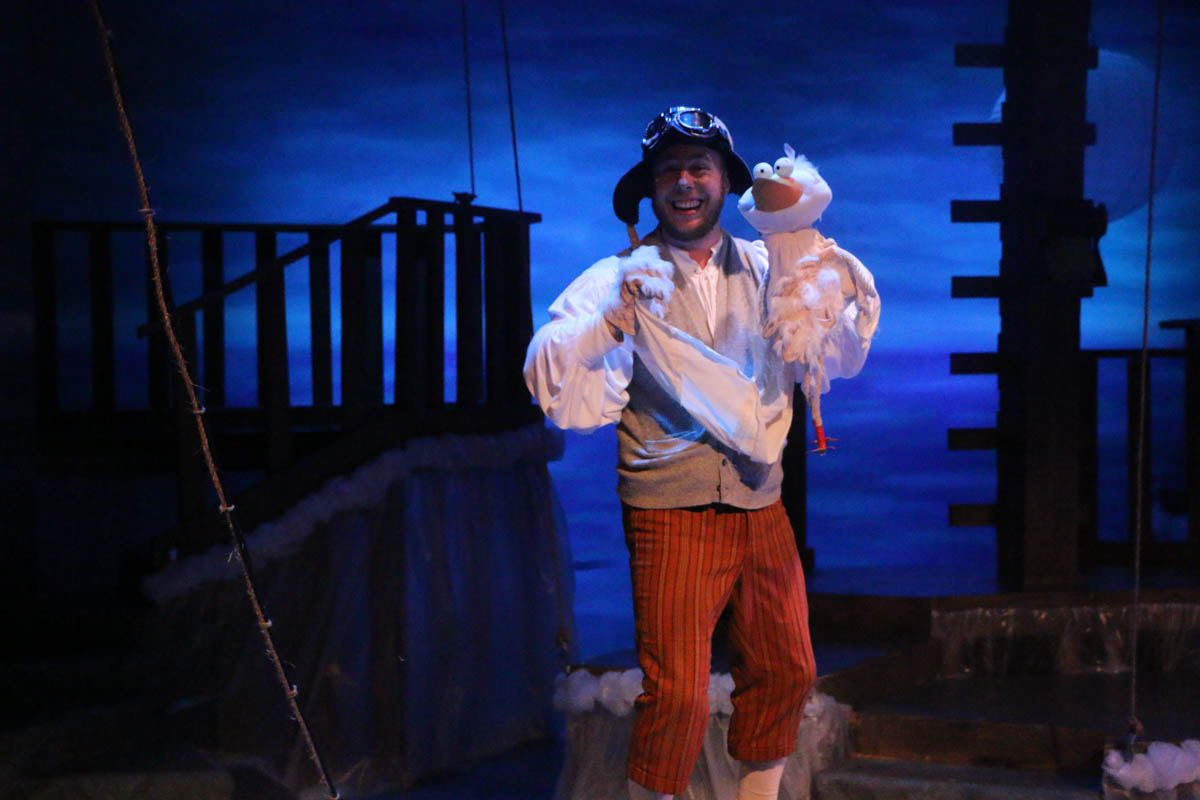
Our Scuttle donned aviator goggles and a wing made of canvas cloth to hint at both a ship's sail and a glider.
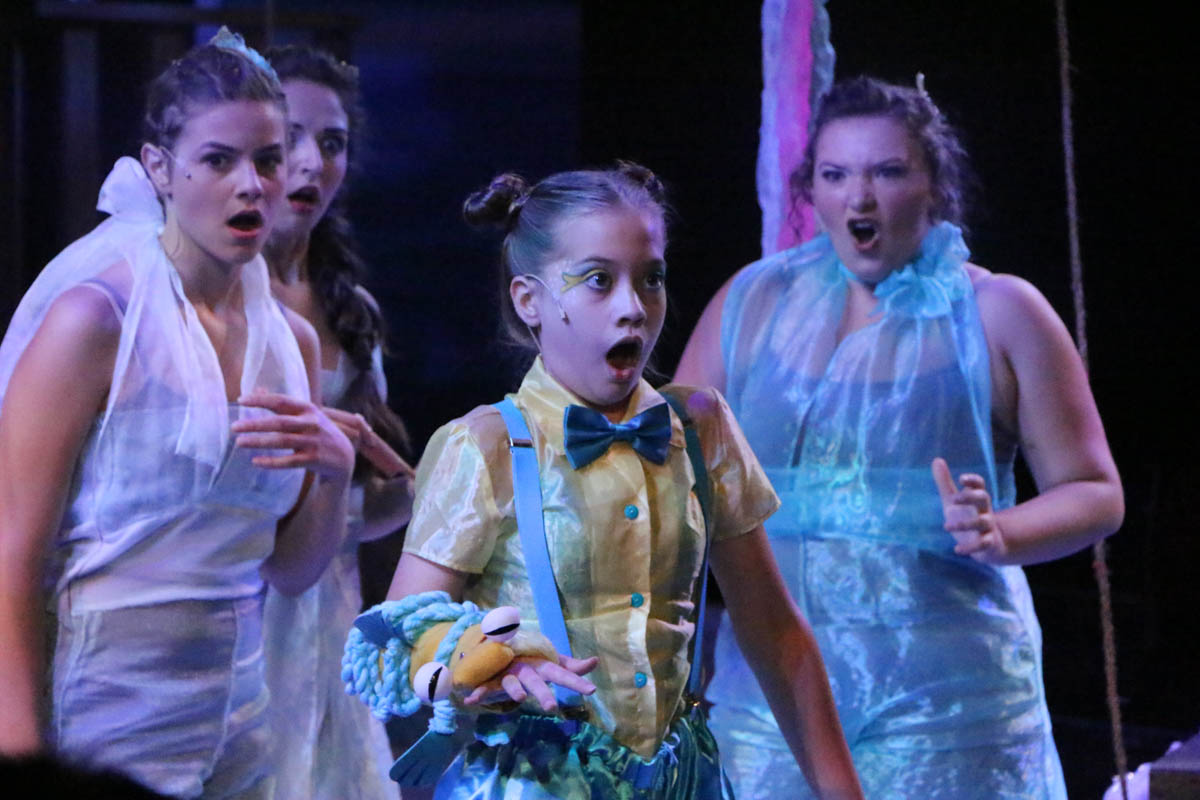
Flounder became a part of the actress as a muff on her arm, always ready to swim and articulate.
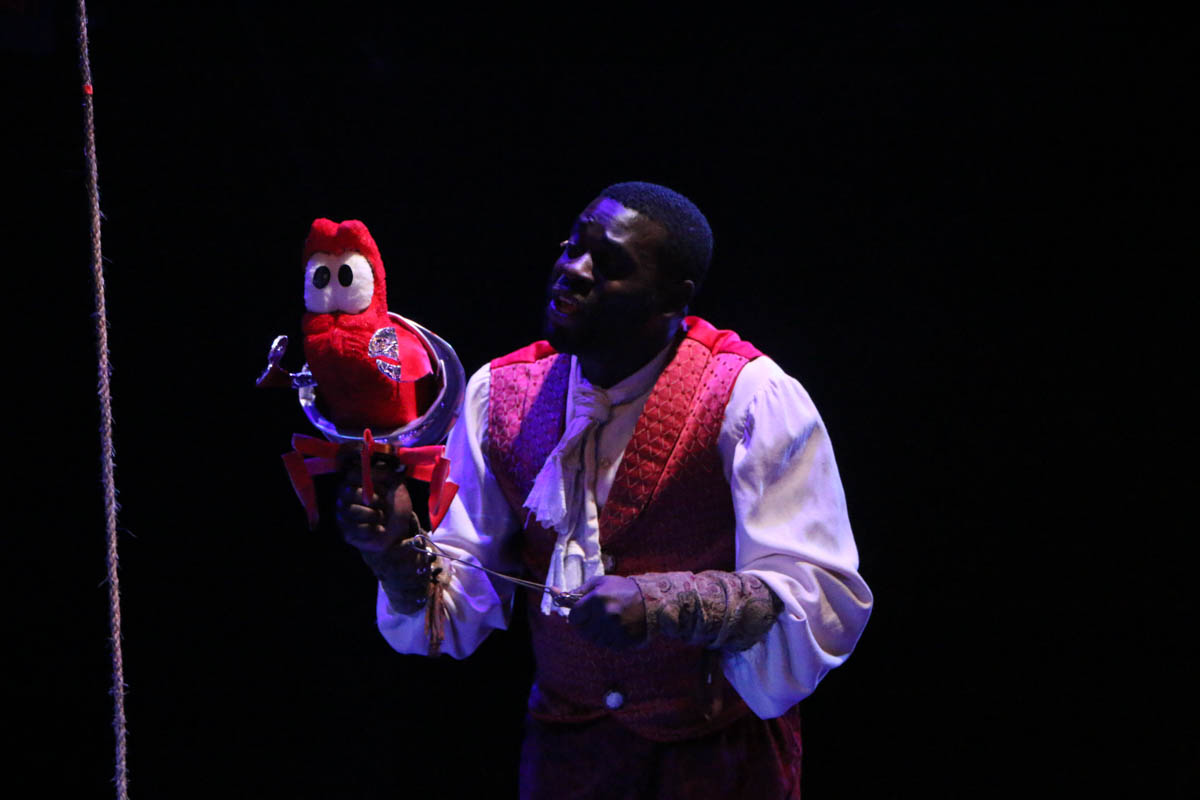
Sebastian was both his hard, crusty self (with metallic armor), and soft memorable cartoonish charm.
Pulling in artifacts from the human and mer-world alike, I was able to incorporate little elements into the creatures that the audience would enjoy spying, forming a bond with each recognition.
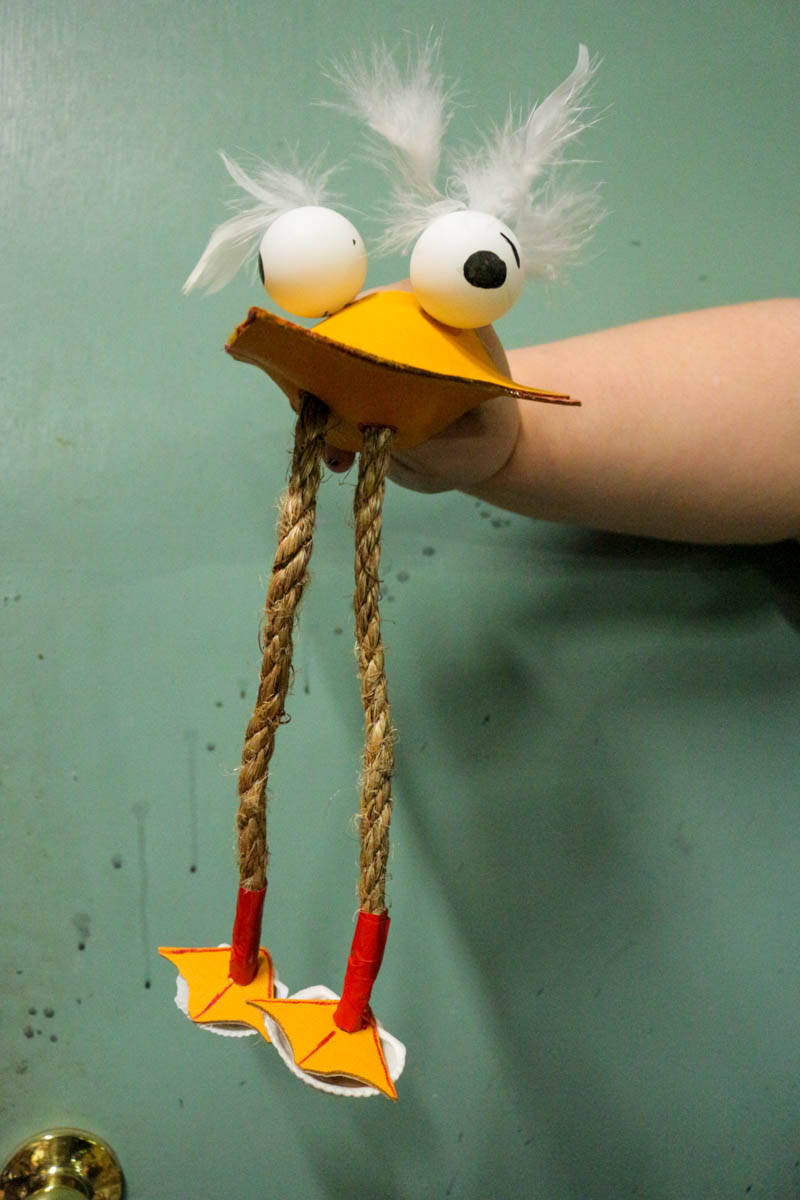
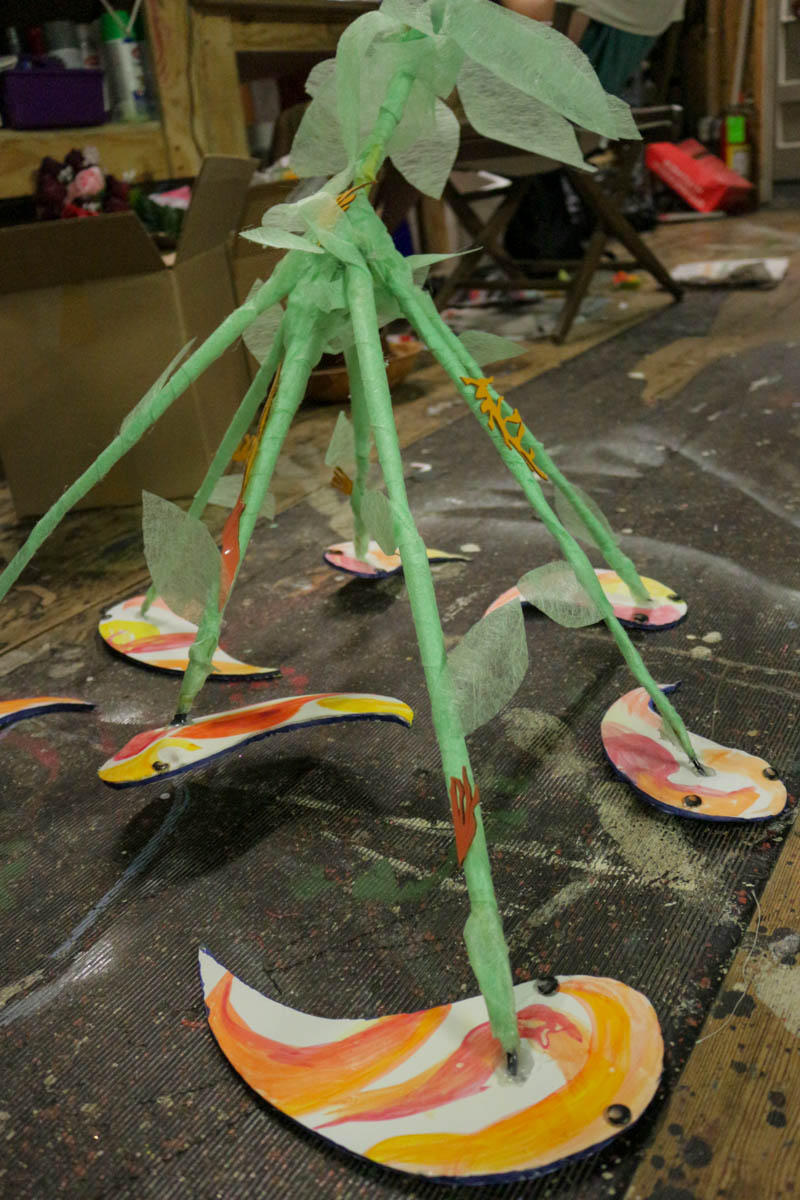
Rope and shells fleshed out the birds, while koi could be walked along the ocean floor like fish on a leash.
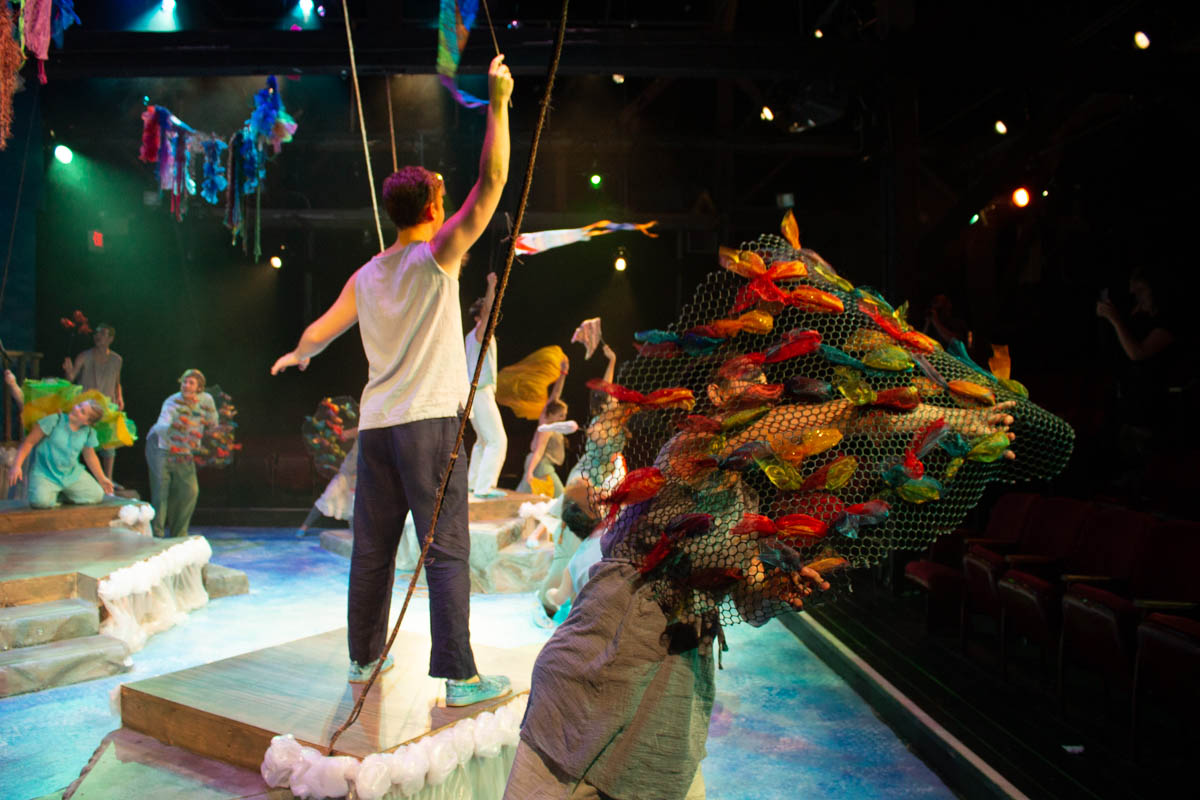
Schools of fish aren't caught in nets, the nets hold their schools together
There was a delicateness to the overall design, that flowed with papers and light fabrics, materials that usually fill our skies as kites and such, were being used to fly through the sea with a semi-transparent, Art Nouveau aesthetic—a nod to the well-known illustrations of the fairytale upon which Mermaid is based.
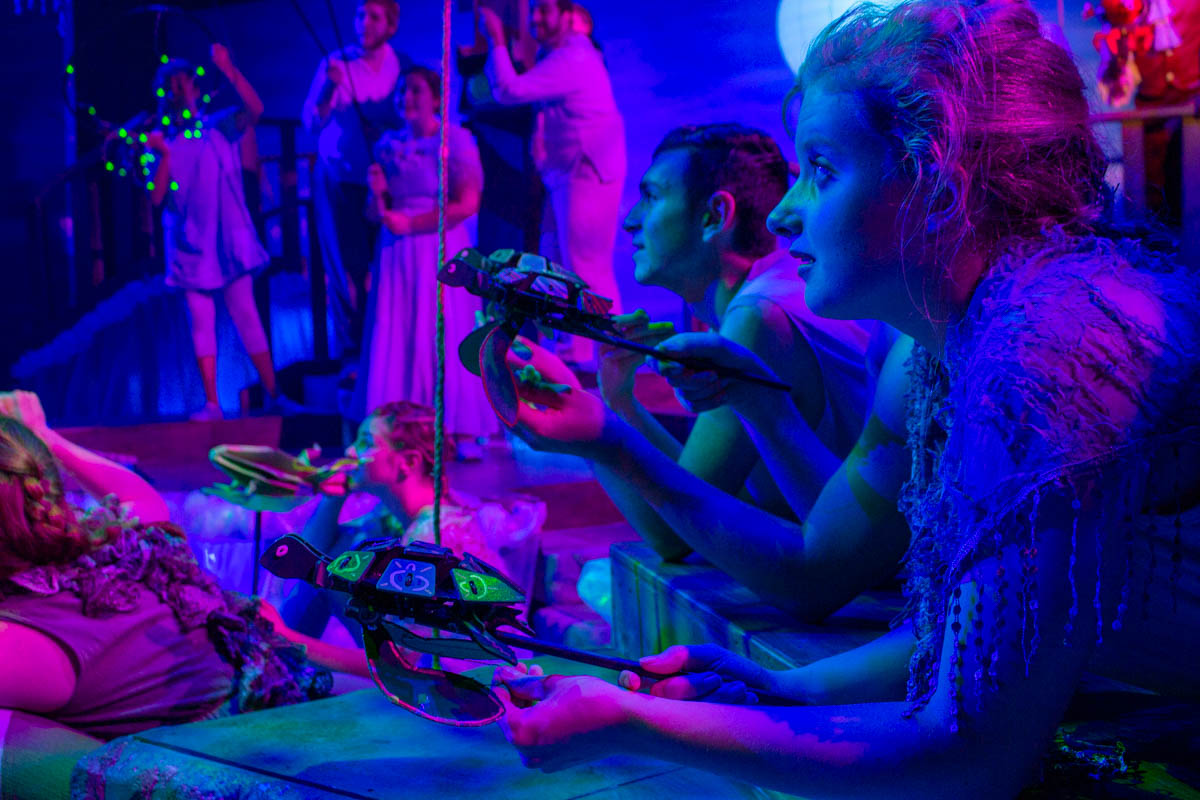
Scale was also important, as we wanted to move fluidly from vast to intimate, and I was interested in finding ways to extend that puppetry into other fantastical moments of the show. The director and I conceived of an introduction to the show during the overture that operated at a small scale to place us in the vast ocean, with our Ariel actress puppeting a miniature version of Ariel, through a sea of creatures and ocean atmosphere, who then breaks through the water and transitions us to human scale, and Ariel launching onto a rock. This convention set us up so that when we performed the transition from mermaid to human, we went back to the small scale, and the audience got to see the ritual magic at work as opposed to hidden “special effects.”
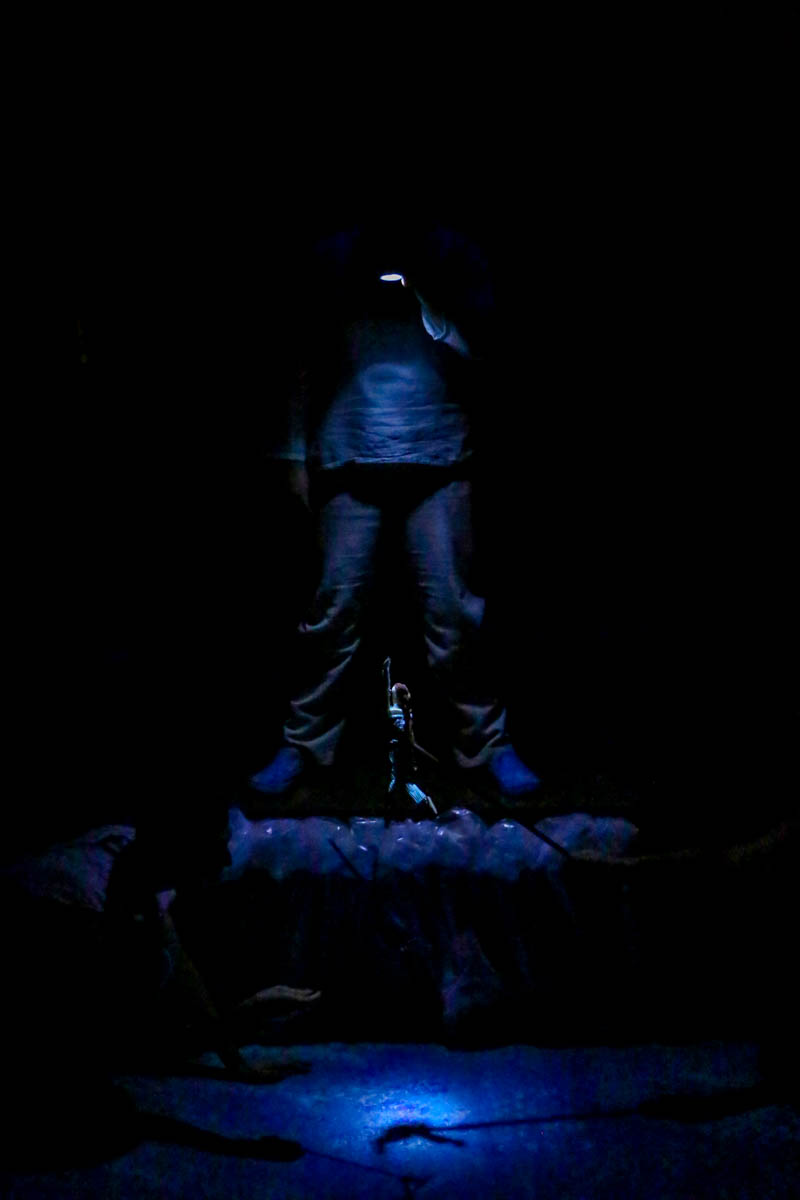
Small Ariel swimming up towards the light
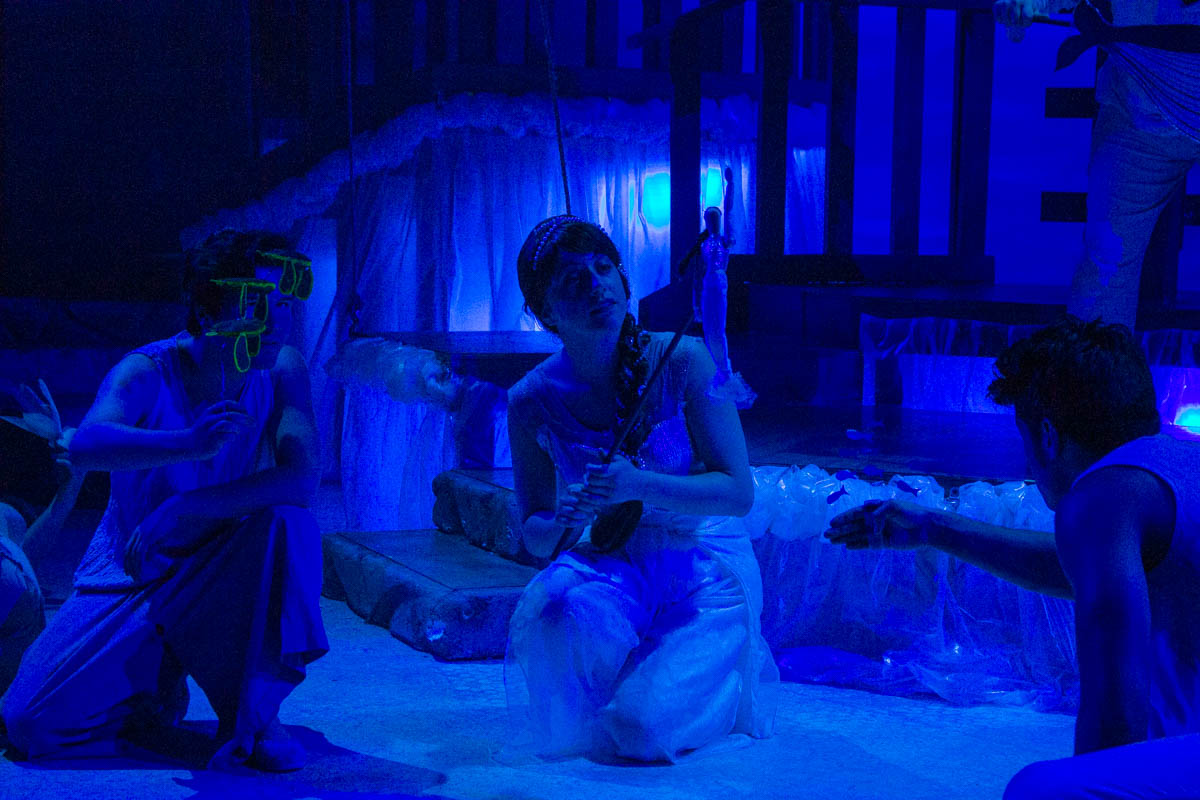
Small Ariel swimming with turtles and fish
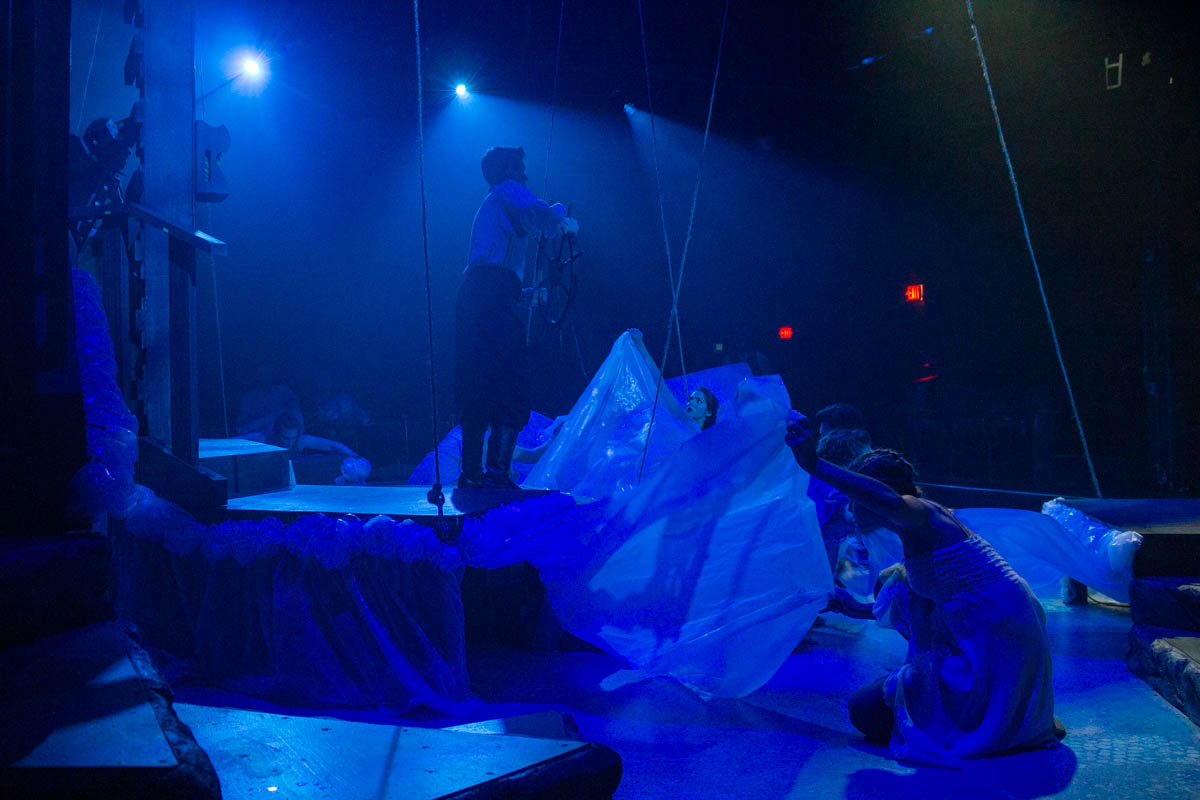
A moment of storm
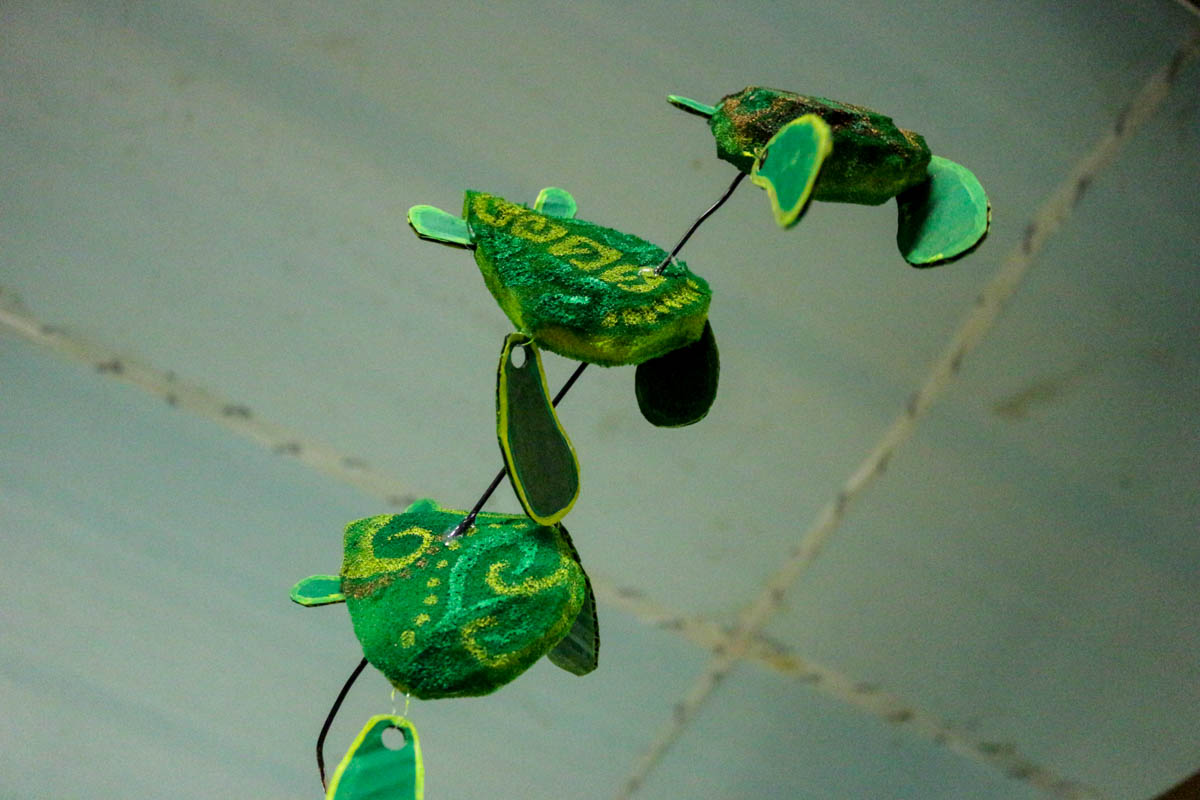

Small turtles and fish are actually quite large next to our Ariel puppet
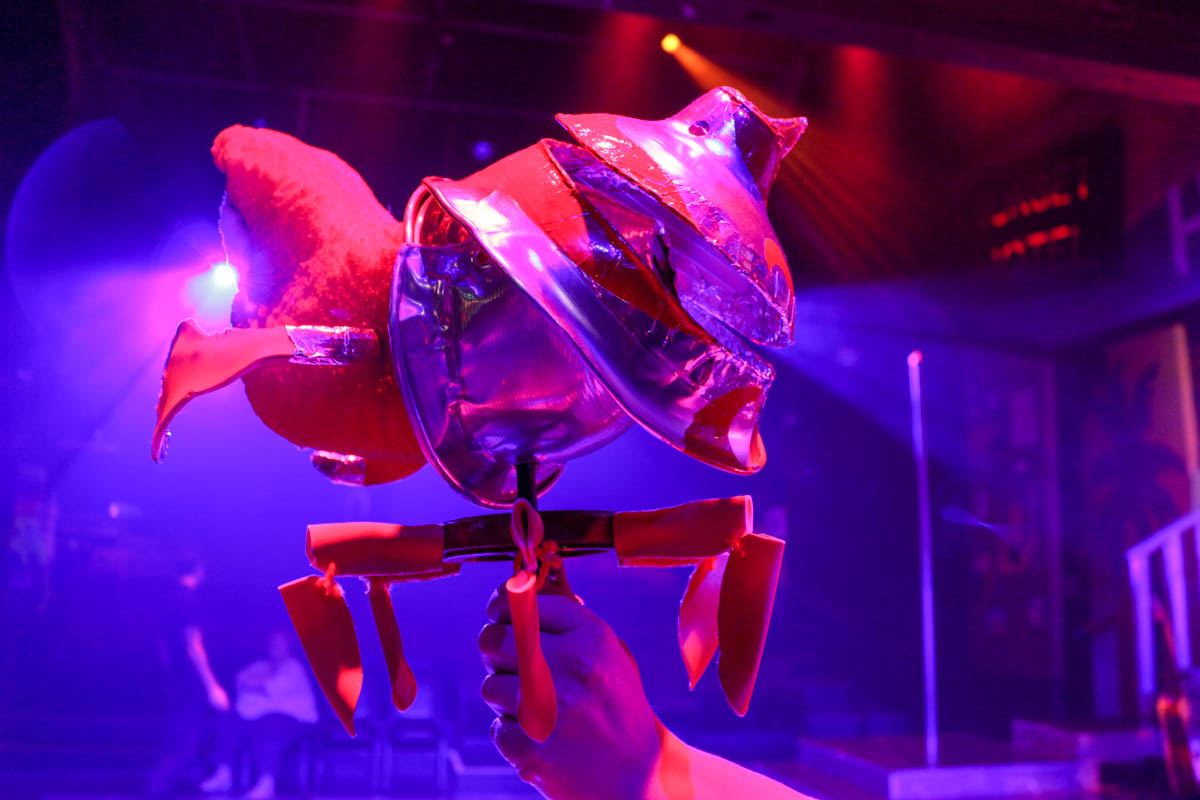
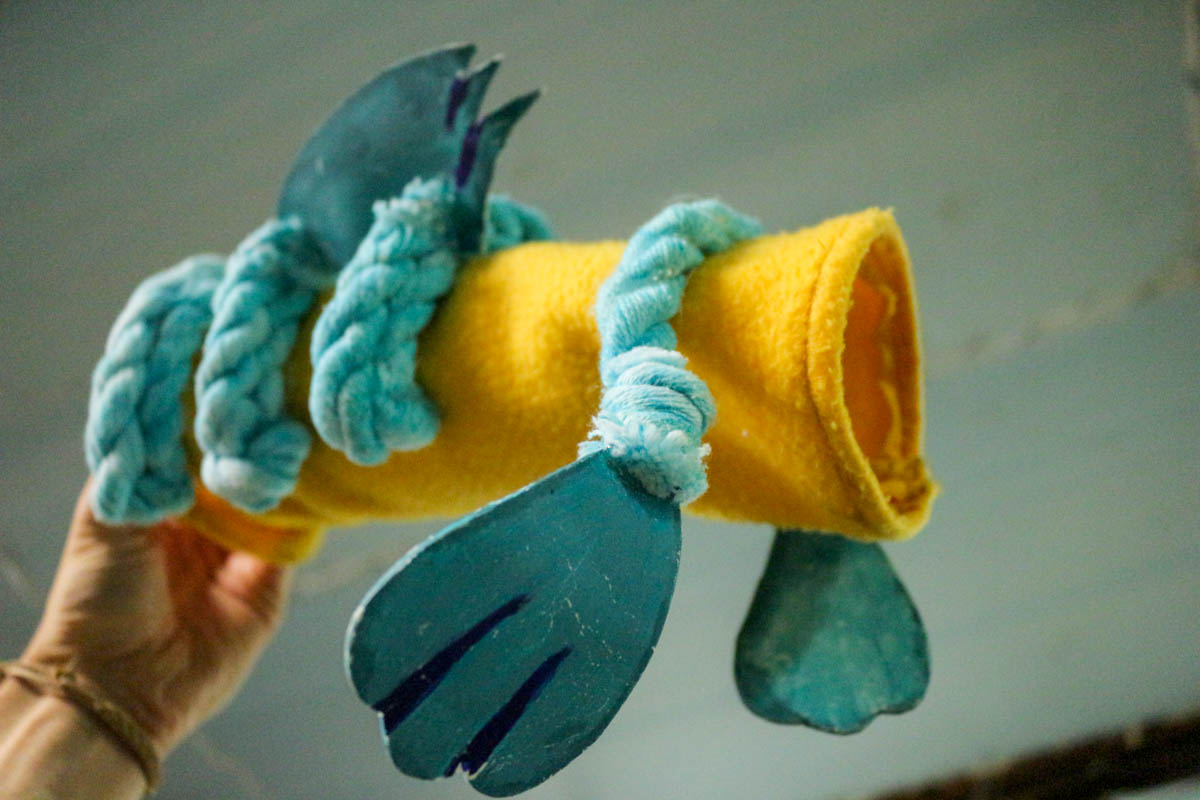
Detail of our primary characters include a tiny ship's wheel holding Sebastian's legs together, and rope forming Flounder's stripes. Hints of the beloved animated characters are also present.
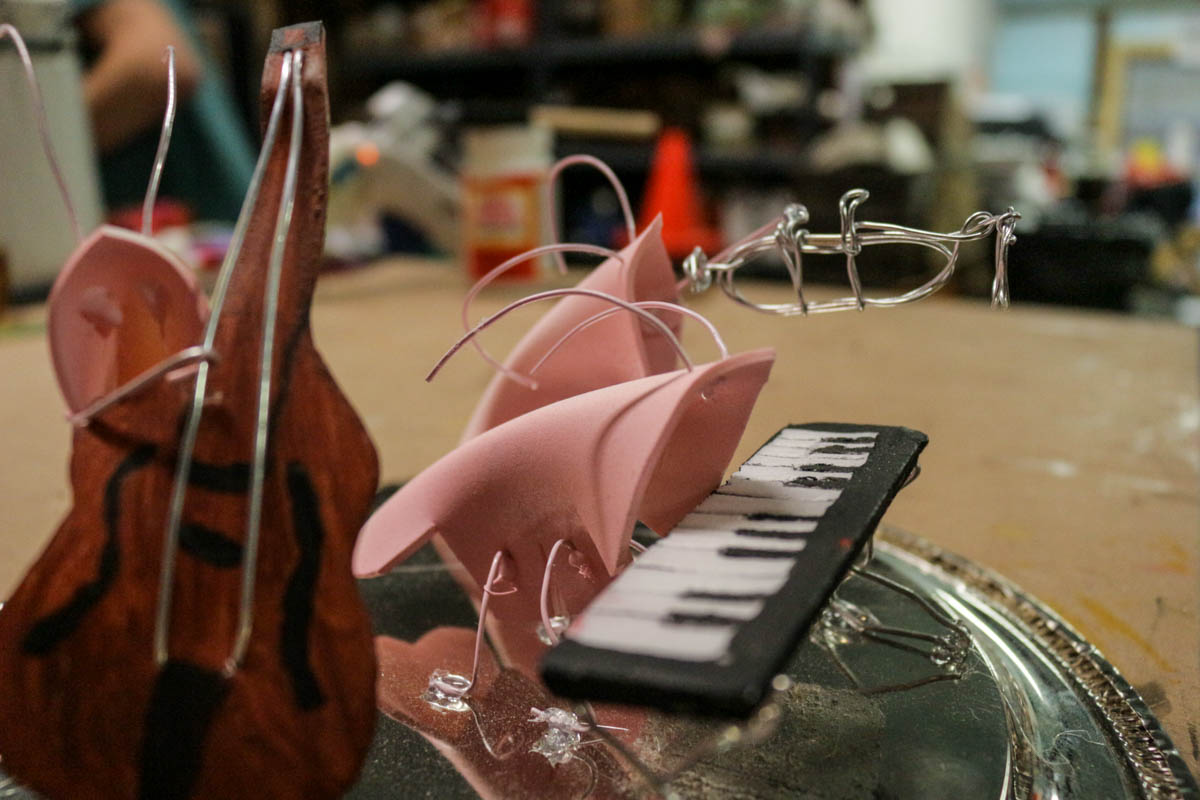
A "tiny" comedic moment when a small crustacean band takes the spotlight
